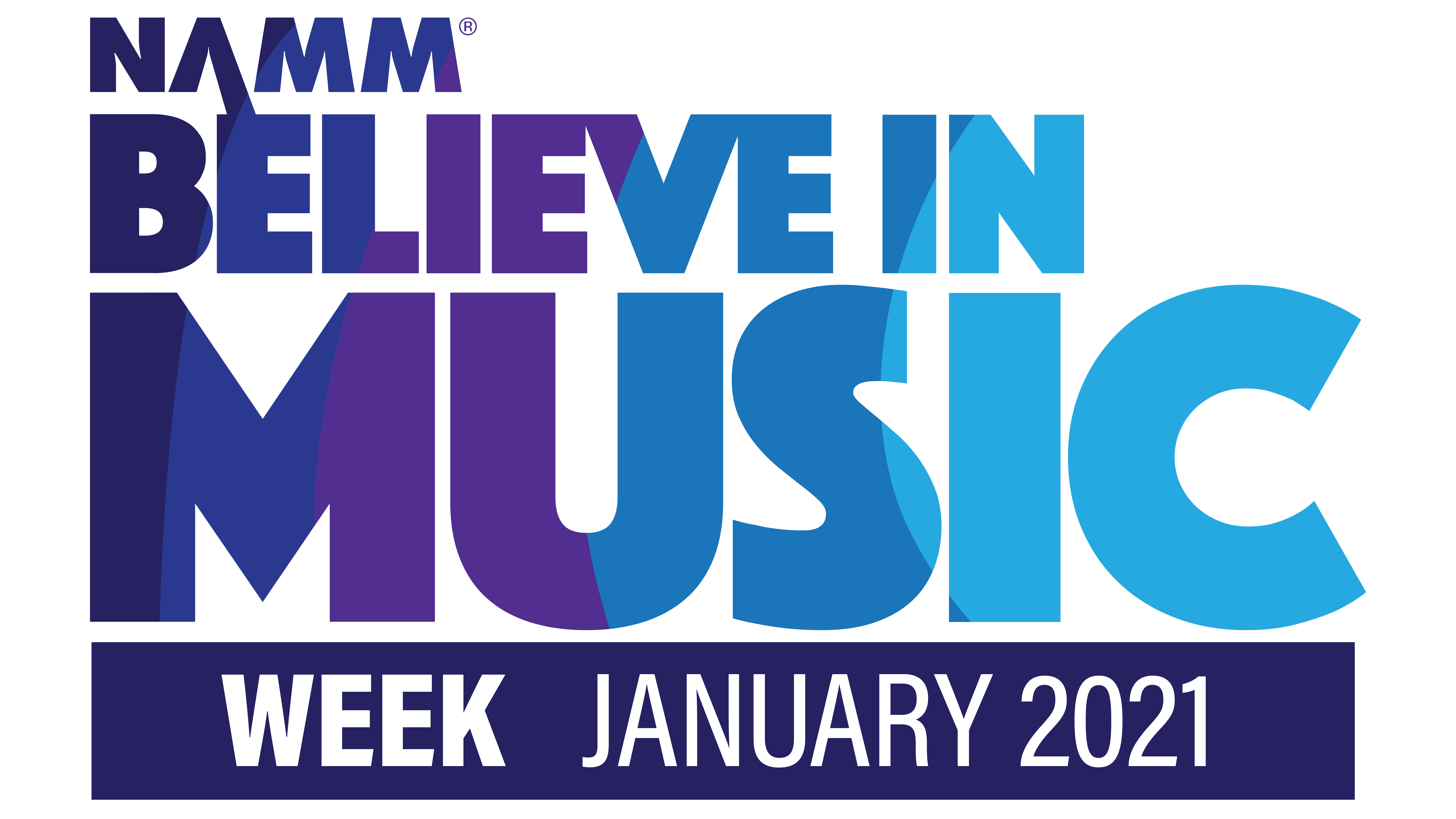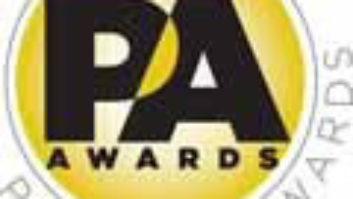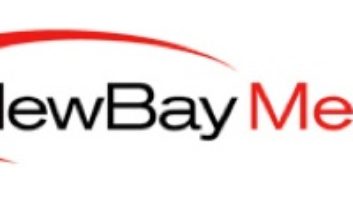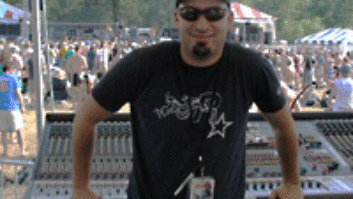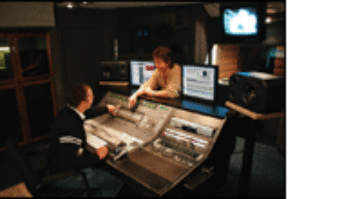Pro Sound News‘ May, 2011 cover story, “SR Education On The Rise,” offered insights and updates from three top sound reinforcement educators around the industry. As comes naturally with teachers, they had far more information to share than we had room to print, so below, we provide their comments in total.
DANA ROUN, DIRECTOR OF AUDIO PROGRAMS – FULL SAIL UNIVERSITY
Have you added anything to or changed any emphasis within your curriculum recently?
The Show Production students are now graduating with a 21 month Bachelor of Science Degree, which has been a two-year transition from our original Associates program. Now our students focus on more in-depth fundamental building blocks in their first year. Physics, Digital Audio and Theory, Audio File Management and Documentation along with topics such as Critical Listening, Digital Recording Techniques and Digital Audio Workstations are studied. These additions represent a carefully planned response to the trending convergence of what we consider “vital skill-sets”.
We are very aware of the need to continue to give our graduates an advanced edge, plus the fundamentals to allow learning growth over their career. Technical software savvy is accomplished through the use of an Apple MacBook Pro, which comes to students through Full Sail’s Project LaunchBox initiative, and which serves as their personal workstation throughout their education and into their careers. Each LaunchBox is loaded with degree specific software including: Vectorworks, Logic Studio and Smaart Live. A host of Mac- and PC-based applications are found in our labs, including Pro Tools, ESP Vision, Meyer Galileo Compass, SIM3 data viewer, EASE, DiGiCo offline and many others.
Digital literacy and Music Business concepts prepare students to communicate with others within the industry. This is an essential skill for graduates looking to share their technical skills in the career world. Our second year of core courses now consists of some new topics, including Concert Media server technology, Advanced Video Production and a number of new focus areas.
Our new Audio and Visual Technologies course were developed to answer the increase in demand for higher-level production technicians for corporate event providers. This new degree represents the convergence of applied audio, lighting, visualization and video skill sets across a much wider career path than ever before. We believe these students will be highly competitive in the job market.
Is there any new gear (to your school, at least) that you’ve started using in classes?
The university continues to stay on the cutting edge of technology by providing the latest equipment, software and facilities to best train live production students. We have opened several new-dedicated lab areas along with an entire new performance venue within the past year.
The Full Sail Studios Gateway Project is a 22,000 sq. ft. multi-purpose facility that features a 500-seat venue and world-class game production and recording studio spaces. Highlights of the Gateway Project feature an illuminated Full Sail Studios main archway entrance that leads to the venue plaza, and serves as the official entrance to Full Sail’s Hollywood-style film Backlot. The building that houses the game production and recording studios is a two-story, 10,600 sq. ft. space. The ground floor holds a new flagship-recording studio that incorporates recording technology and variable acoustic isolation areas that can be utilized by both students and professionals. The hallways feature oversized acoustic windows that allow guests to easily view the recording process.
Our new live production venue features HD Video Record and Display Systems; a Sony HD broadcast cameras andproduction suite; Barco (48’x16’) LED system, 3 Barco HD Projection systems; Martin Professional moving light fixtures and MA Lighting control; and Meyer Speaker systems. Digico SD7 and SD8 consoles serve at FOH and Monitor engineering positions in the venue along with options to use a Avid Venue D Show console in our simulcast mix room used to multi-track record and provide an additional stereo feeds to the HD video suite. We use the 72-Channel SSL Duality linked via fiber next door to multi-track major events.
Our Concert Media Server Lab is a recent addition to our focus on concert media server creation, programming and display technologies. It utilizes (7) Hippotizer Grasshoppers with Zookeeper software and image creation software. This is an emerging technology focus we plan to play a major role in providing young talent for the industry.
Also, we have constructed a new Avid SC48 digital console training lab used to introduce students to digital console signal flow, mixing with Pro Tools concepts. (13) console stations)
With digital desks now a standard for many houses of worship, theatrical tours and concert venues, is there a concern that skills will go out-of-date with the next software upgrade to a desk, or does it all come down to knowledge of audio fundamentals?
Fundamentals are the basis for student success. Although, equipment and technology advance at a rapid pace, our ability to tie new and old concepts together is essential to sustain a long productive career and that is what we emphasis over any gear we have. The minute you get locked in to only one manufacturer or one technology is the exact moment you lose ground on the future. All of us need to be able to connect the fundamentals from one to another for as long as we breathe production.
Digital desks now bridge the recording and live sound worlds; is this affecting how you teach recording and SR to your students? Are they still considered two separate careers at this point?
We addressed this issue when we developed our new program several years ago. We recognize the crossover within the production worlds. Every year we all see technology used in one area and then often merge into each discipline. DAW technology is a great example. Although there are very specific techniques within a certain focus, we strive to provide our students with a full tool set of abilities and a vast knowledge of the industry. Our recording and live production students share a critical first year of training for this reason.
Digital audio networking is becoming a mainstay in many corners of the audio installation and touring markets. Do you see any interest in this topic from your students yet, and is it something you address or plan to address in your curriculum?
Yes, we absolutely have this technology within the advanced Show Production labs and curriculum and it’s growing. The impending AVB standard, Dante and Cobranet and others are all a part of what students need to know. Our job is to provide a good understanding of practical applications to our students.
Are there any places of note that your grads have been placed in recent times?
Full Sail graduates have worked in concert production for the #1 grossing world tour 10 of the past 11 years.
2010: Bon Jovi “The Circle Tour”
2009: U2 “360”
2008: Madonna “Sticky & Sweet”
2006: The Rolling Stones “Bigger Bang”
2005: U2 “Vertigo”
2004: Madonna “Re-Invention”
2003: The Rolling Stones “Licks Tour”
2002: Paul McCartney “Back in the World”
2001: U2 “Elevation”
2000: Tina Turner “Twenty Four Seven”
Anything else the world should know about?
We actually have started to slowly inject digital signage programming technology within the Show Production installation topics for production students. We recognize a viable career path using much of the technology students are already working with.
Remember gear is gear …. It’s the people and their commitment to continually learn and support the team.
• • • • •
TONY COTTRILL, COORDINATOR OF LIVE SOUND, BELMONT UNIVERSITY – MIKE CURB COLLEGE OF ENTERTAINMENT & MUSIC BUSINESS
Have you added anything to or changed any emphasis within your curriculum recently?
With the addition of the Avid Venue D-Show digital console, I have been emphasizing digital control surfaces and spending more class time on plug-ins, i.e. Waves, Digidesign and Massey. We are also placing more emphasis on digital signal routing and soft patching inputs & outputs. The D-Show and Yamaha off-line editors have become a large part of the live sound curriculum. Since the majority of mix preparation is being programmed with off-line editing, we start learning our digital consoles with these editors before moving to programming on an actual control surface.
Rex Ray, senior engineer for Clair Nashville, has been guest lecturing on two topics during my Advanced SR classes—“A/C Power, 3-Phase Power, Generators, Rigging Motors, and Troubleshooting A/C circuits” and “Wireless Technologies, Microphones, IEM’s, Combiners, Antennas, RF Analyzers.”
Also, in conjunction with Clair Nashville, I have been covering in greater detail the role of System Technicians, Line Array Theory/Calculators and Line Array Rigging (Line Array Lifters and Motors)
We recently created an Educational Partnership with Metric Halo, and we are using their Spectra Foo analyzer program for Frequency Analysis, Transfer functions, SPL metering, and Bench Testing. This program is becoming a large part of my class curriculum and during our live events.
Is there any new gear (to your school, at least) that you’ve started using in classes?
– Avid Venue D-Show / Profile Digital Mixing Console with FWx card and Pro Tools LE
– Yamaha M7CL-48 Digital Mixing Console
– Line Array lifters- CAAB (Clear As A Bell, a student run sound company at the school) was the first audio company in the US to purchase the VMB TL-A220 Line Array lifters from VMB Valencia, Spain
– JBL VRX918S – Flying Subwoofer
– Crown XTI6000 Amplifiers
– Chauvet 56-24 LED Par Fixtures
– JBL SRX712M Stage Monitors
– Sennheiser Inner Ear System-300 IEM G3 Series, 4-channels
– BK Precision Sound Level calibrator
With digital desks now a standard for many houses of worship, theatrical tours and concert venues, is there a concern that skills will go out-of-date with the next software upgrade to a desk, or does it all come down to knowledge of audio fundamentals?
Gear will only get you so far, so I stress the “grounded in the basics” mentality. Students still need a strong understanding of basic signal flow, driver-operating principles, horn-dispersion, enclosures, crossovers, series/parallel driver hookups and driver impedance, amplifier bridge-ability, amplifier power, delay fills, temperature gradients and more, all the way down to basic stagehand lingo.
Modern day equipment skills are really a very small percentage of what students need to learn for landing their dream audio gig; interacting with others, leadership, designating tasks, social networking, and organization are the key elements.
Digital desks now bridge the recording and live sound worlds; is this affecting how you teach recording and SR to your students? Are they still considered two separate careers at this point?
I have my students record everything from basic console 2-mixes to full on multi-track sessions. It was only a few years ago when tracking live performances here at Belmont that we would have to set up a separate split snake, a third console for recording and a separate room or mobile recording truck. Now we just direct out of our FOH console straight to Pro Tools, picking off the microphone signal directly from post head amp. With this comes the important aspect of the students understanding DAWs and recording techniques. Our students also have mixdown labs where Pro Tools is their source material inputted directly into their digital mixing console and 2-mix out to a digital 2-track mixdown deck.
It is an exciting time for me to be involved with live audio; we have the “studio meets the road” factor. With all the years I have spent in recording studios, I find it an incredible leap forward that you can have that Pro Tools rig linked directly into your FOH console, record every show, play last night’s multi-track performance in the next day’s venue, make live records and even have the audience member leave with a copy of that night’s performance…I was watching a webinar the other day, and the FOH mixer was telling a story about playing the previous night’s performance after sound check. The artist came to FOH to listen, hearing their actual performance through the PA for the first time. The FOH mixer went on to explain how this experience was a huge confidence builder for the artist, who was relieved to hear how his music translates to the audience.
I have also observed here in Nashville the studio engineers taking notice of what we are doing these days in the live audio world. This coming fall, we are scheduling with the local AES Chapter “engineer hang time” for me to present an evening workshop on the interaction of Pro Tools and the Venue console within a live audio environment. I am in truth looking forward to addressing the local studio audio community. Our local AES chapter has been populated mostly with those who live and breathe the studio side of this business, with a huge hole in their membership of live audio engineers. My hopes are that this seminar will help to bridge that gap in some way.
Digital audio networking is becoming a mainstay in many corners of the audio installation and touring markets. Do you see any interest in this topic from your students yet, and is it something you address or plan to address in your curriculum?
A complete understanding of DSP is massive. Many of my students are using their iPads to wirelessly control their digital work surfaces, either when roaming the stage to ring out wedges or walking the venue for checking their FOH mixes. We also use the manufacturer’s off-line editing software on a tablet PC and wireless router for remote console control.
Within the curriculum, Belmont stresses the importance of programming amplifier DSP, digital drive racks, Clair I/O’s, Lake processors. The movement is bit by bit (pun intended) heading to all DSP being built directly into your mains PA amplifiers. Clair has recently been rebuilding their line array systems with all DSP being manipulated within the Lab Gruppen amplifiers. A computer screen at FOH constantly monitors the system status and will even show you if an amplifier is seeing an open load (e.g. a loudspeaker or wedge has come unplugged)—mind-blowing technology.
Our big project this summer with CAAB (Clear As A Bell, a student run sound company at the school) will be to make our festival PA a completely networked system via Ethernet and w/l routers.
Are there any places of note that your grads have been placed in recent times?
Hope Stuemke, Rachael Aull, Lewis Lowder, Gordon Droitcour, Will Wilson, Scott Songer, Nick Kaumeyer and Elliot Wiley where all recently hired by Clair Global. Our students are currently working with Garth Brooks, The Eagles, John Mayer, Korn, Disturbed, Sevendust, Roger Waters, Billy Joel, Justin Bieber, Jonas Brothers, Pheonix, Tim Mcgraw, Joe Nichols, Jamey Johnson to name a few.
Anything else the world should know about?
I am still freelancing as FOH and Monitor engineer, currently working and traveling with living legend Ronnie Milsap as his monitor engineer.
Also, my Intro to Live Sound Reinforcement class is currently being streamed live from my Belmont classroom to Honolulu Community College for their MELE program, Music & Entertainment Learning Experience at http://www2.honolulu.hawaii.edu
• • • • •
TOMMY WIGGINS, PROGRAM MANAGER, RECORDING ARTS & TECHNOLOGY DEPARTMENT, CUYAHOGA COMMUNITY COLLEGE
Have you added anything to or changed any emphasis within your curriculum recently?
Our primary focus has and will always be “signal flow, signal flow and more signal flow” In live sound, it is critical to be able to respond instantaneously to what’s happening in the house.
Is there any new gear (to your school, at least) that you’ve started using in classes?
We’re REALLY pleased with our Yamaha M7. Besides our SR and Sound for Worship classes, for the past two years, it’s been our FOH desk on our long-running cable TV show Crooked River Groove. Students crew the stage, where we record live sets by 16 regional acts. The Aviom 32 channels of Pro Tools are then sent to four different studio where students record and mix.
With digital desks now a standard for many houses of worship, theatrical tours and concert venues, is there a concern that skills will go out-of-date with the next software upgrade to a desk, or does it all come down to knowledge of audio fundamentals?
Heck no. Refer to “signal flow, signal flow and more signal flow”
Digital desks now bridge the recording and live sound worlds; is this affecting how you teach recording and SR to your students? Are they still considered two separate careers at this point?
We reinforce the idea that each graduate is an independent contractor, and to make a living in audio you need to be versatile. Today you may be doing a location recording, tomorrow a band in your studio and this weekend you may be running sound at a club.
Digital audio networking is becoming a mainstay in many corners of the audio installation and touring markets. Do you see any interest in this topic from your students yet, and is it something you address or plan to address in your curriculum?
Our sound stage and all studios are equipped with “production panels” that can route up to 96 channels of audio, video, AES, and other signals from anywhere to anywhere via an Aviom Pro 64 audio network. We regularly send up to 32 channels of audio from our soundstage to five different studios simultaneously without ground loops! Digital audio networking rules, and our students need to know how it works.
Are there any places of note that your grads have been placed in recent times?
Several of our graduates who started working with regional SR contractors are now on national tours
Anything else the world should know about?
Let me hand it over to my two excellent SR guys!
TIM KENNEDY, LEAD LIVE SOUND INSTRUCTOR, RECORDING ARTS & TECHNOLOGY, CUYAHOGA COMMUNITY COLLEGEon how his class has changed:
I have been inserting Digital consoles, in class a little more each semester. Analog is still the foundation, but with the M7 I am able to introduce the student to a whole other realm in live sound. The fundamentals of Live Sound is still the main part of the class, but now I can show the students how things run in analog world and digital world. Students seem to be catching on–they are starting to realize a couple of things. One, that it does not take thousands and thousands of dollars to try to get into the Live sound game. You can buy a small digital console and have basically half the gear already to go.
And that being said, another point that they are starting to realize, is that you have to know the ins and outs of operating a digital board. With dynamics, EQs, effects, etc. all in the board itself, you’d better know how to get to where you need to. If the band is asking for something or if a problem arises, you have to know exactly how to find the “page” to take care of the issue. Signal flow with-in the digital boards maybe different then analogue, but the students are seeing that signal flow is still signal flow.
BILL HORSCHKE III, SOUND FOR WORSHIP AND LIVE SOUND INSTRUCTOR, RECORDING ARTS & TECHNOLOGY, CUYAHOGA COMMUNITY COLLEGE on his approach to his classes:
I want students in both my Live Sound and Sound for Worship classes to feel comfortable and confident on digital consoles. As I introduce new topics (gain setting, eq, compression, etc) we discuss the theory, and then get to lab and put it into practice on both analog and digital desks. The first gain knob a student touches may well be an analog pot on a Soundcraft, but 15 minutes later, they will be adjusting the HA on the Yamaha M7. The majority of the students are arriving with some familiarity with DAWs and the digital boards come naturally. With “old school” students, I MAKE them use the digital desk, and they quickly gain confidence. Many of my Sound for Worship students are attending Tri-C BECAUSE their church is considering purchasing or has recently upgraded to a digital console. I also try to emphasize that Digital in live sound is not just digital consoles, digital integration is now found throughout the signal chain in today’s systems. I don’t preach analog or digital as “better”, but strive for the students to understand the advantages and limitations of all the gear (analog or digital) that they are likely to encounter now and in the future.
